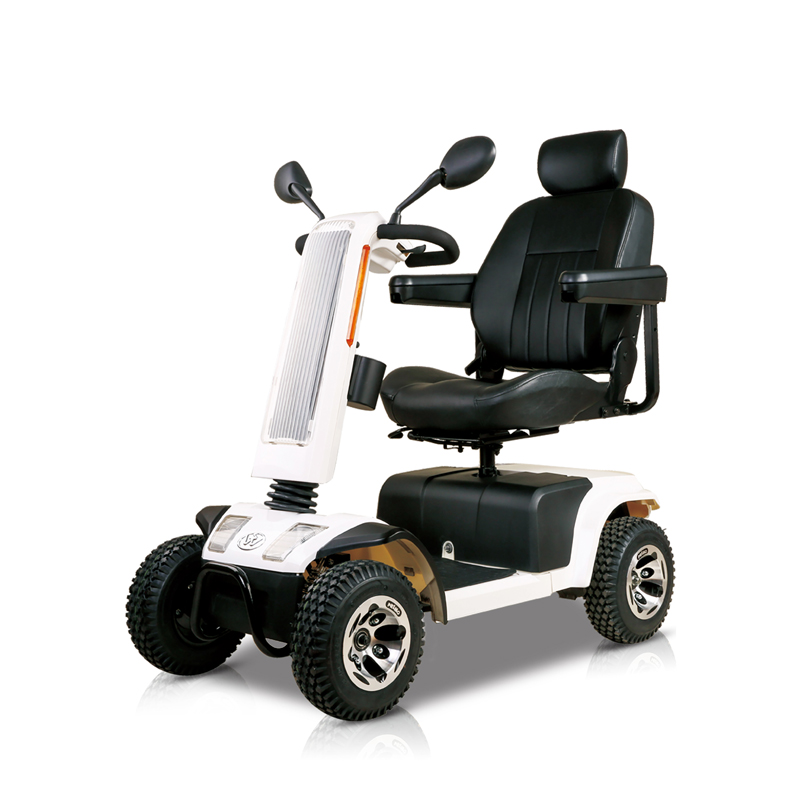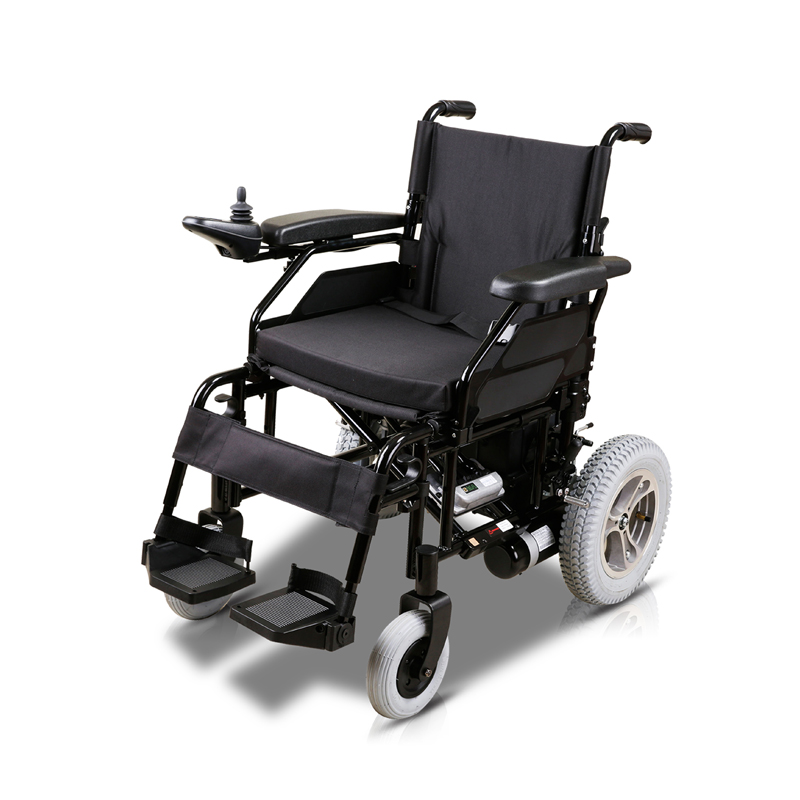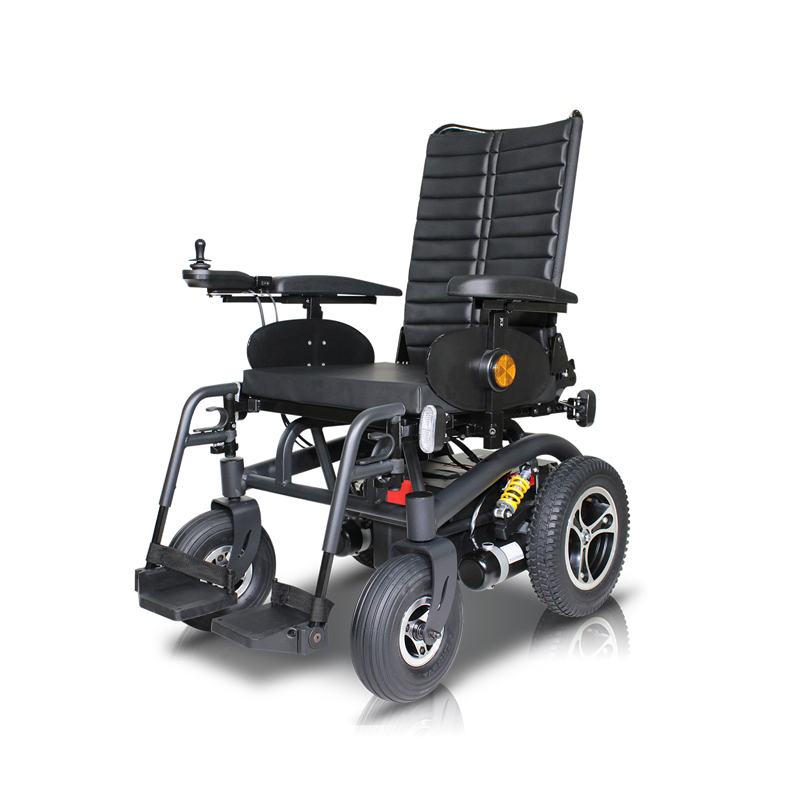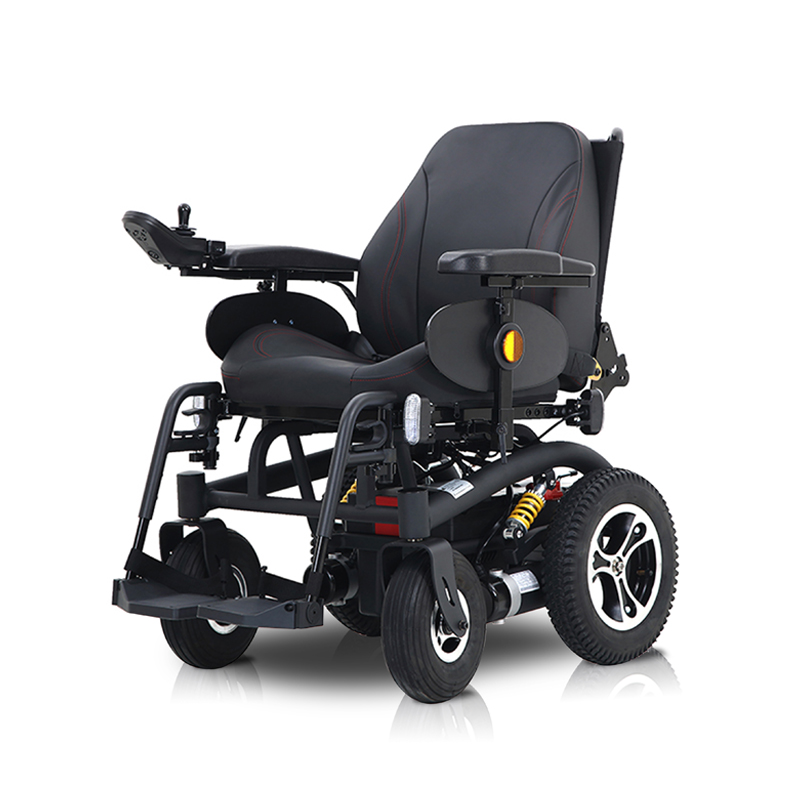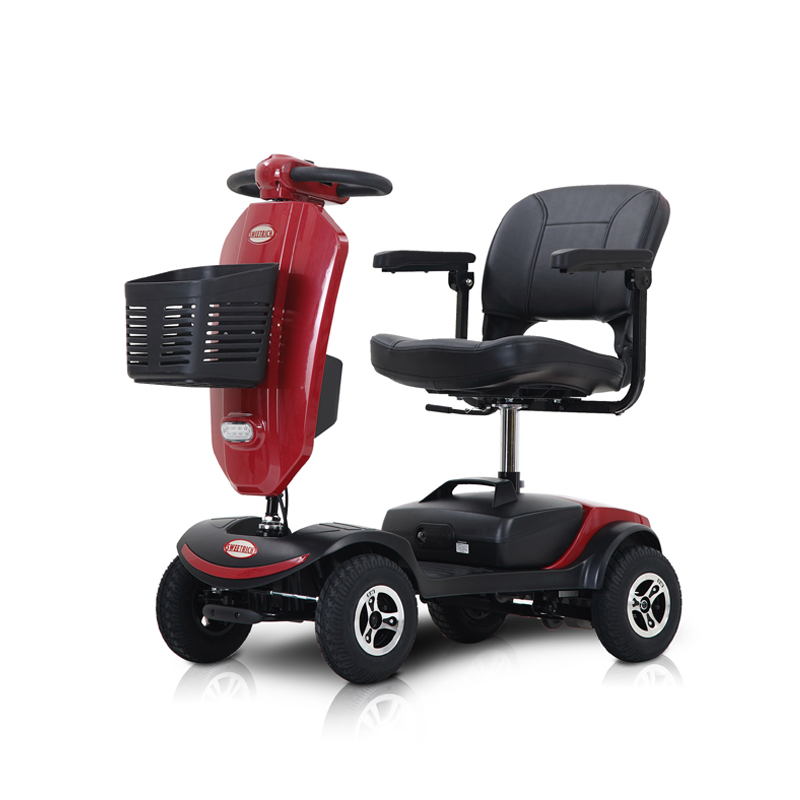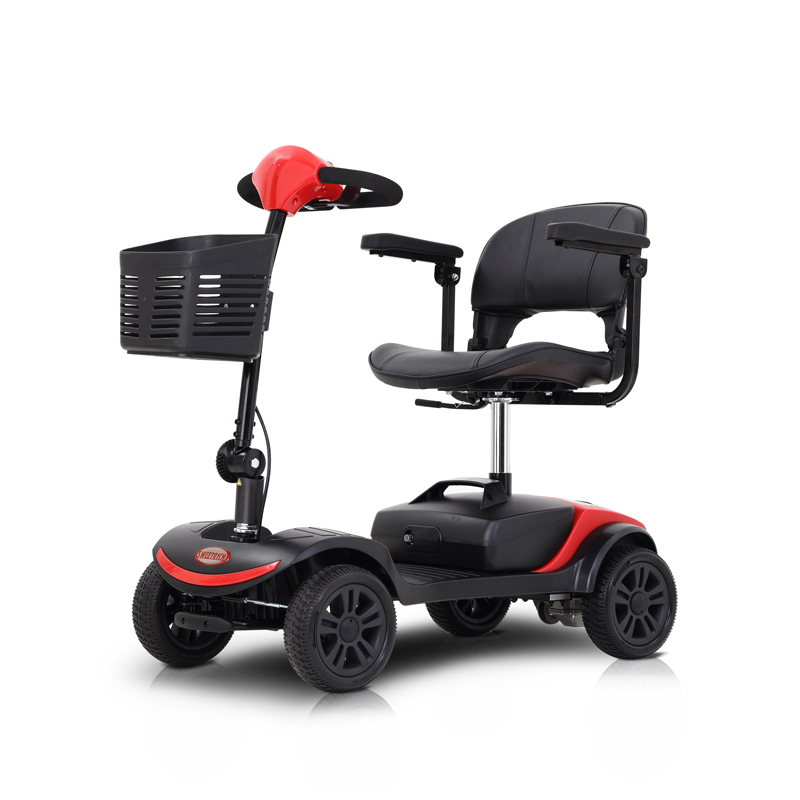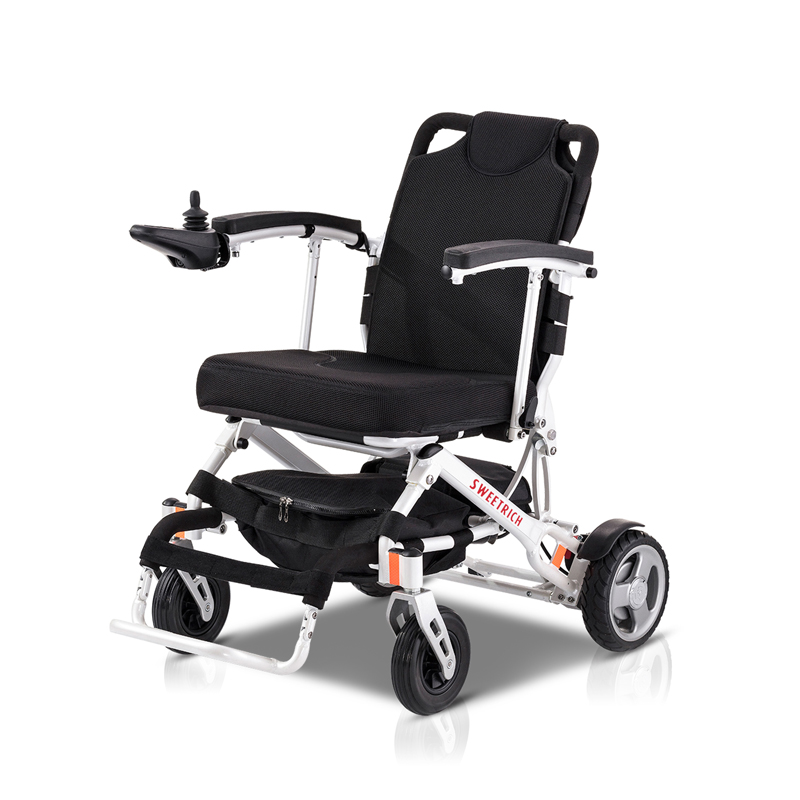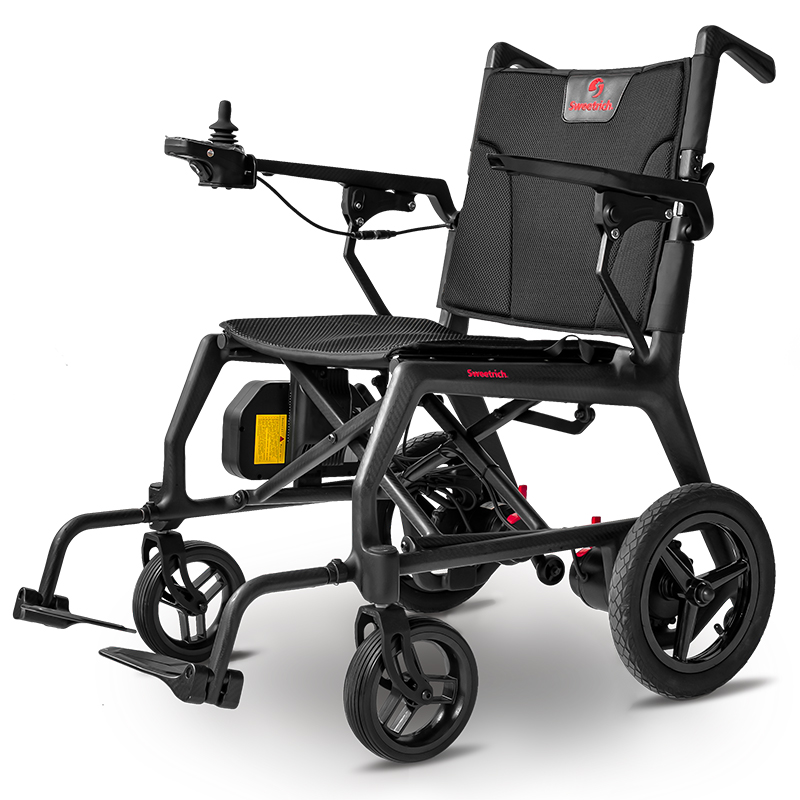The collusion of bone density and gyroscope: millimeter-level protection of dynamic center of gravity adjustment
When a 78-year-old osteoporosis patient drives a scooter over a sidewalk slope, the bone density database built into the body is driving the hydraulic suspension to make 200 fine adjustments per second - the roll angle is forced to be locked within 3 degrees, which is the safety threshold that orthopedic doctors and mechanical engineers have been arguing about for three years. The 16-zone pressure sensor grid under the seat is more like an invisible nurse, capturing the pressure distribution at the ischial tuberosity in real time. Once a certain area is continuously pressurized for more than 20 minutes, the airbag array automatically changes its shape. Is the nightmare of bedsores in traditional wheelchairs being ended by automotive-grade wire-controlled chassis technology?
Energy paradox cracking: From vegetable basket recycling to wireless charging, the elderly-friendly equation
In the supermarket fresh food area, the moment the user puts three pounds of celery into the front basket, the piezoelectric ceramic device converts the weight into 0.2 watt-hours of electrical energy storage; on the return trip, the gravitational potential energy of the downhill section is reversely charged through the hub motor, which is enough to support the navigation lights of the evening square dance. These fragmented energy collections are only a corner of the battery life puzzle - the truly subversive thing is the wireless charging mat on the kitchen floor: even if the elderly deviate the front of the car by 3 cm from the marking line, the magnetic field coupling system can still maintain 85% transmission efficiency. When the silicon-carbon battery releases an energy density of 280Wh/kg in a minus 10℃ environment, can the travel radius of the elderly in cold cities break through the curse of "battery anxiety"?
Space folding magic: the migration of form from medical equipment to shopping cart
The medical model of carrying an infusion stand in the unfolded state, and transforming into a supermarket trolley after folding - this scene switching relies on a precise four-bar articulated mechanism. Engineers got inspiration from the folding of solar panels on aerospace satellites, compressing the 1.8 cubic meters of mobile space to 0.25 cubic meters, but it can still stand on its own in the folded state. Even more radical is the crawler mode: facing the 15-centimeter-high step obstacle in the old community, the front wheels automatically separate and reorganize into a triangular crawler structure. The moment the torque is increased to 45N·m, a climbing scene that traditional wheeled scooters cannot match begins. When a scooter seamlessly switches between the pharmacy and the vegetable market, is the boundary between tools and life dissolving?
Seven layers of safety barriers: a protective matrix from millimeter-wave radar to ECG grips
• Physical layer: The magnesium alloy roll cage has passed the 300 kg lateral pressure test, which is equivalent to being squeezed by five adults at the same time
• Prediction layer: The micro gyroscope starts the reverse balancing motor 0.5 seconds before the body tilts to the critical point
• Perception layer: The millimeter-wave radar penetrates rain and fog to detect obstacles within three meters, and the ultrasonic sensor captures pets within 20 centimeters
• Medical layer: The ECG electrodes in the grip continuously monitor the heart beat signal, and the data is directly transmitted to the community hospital through an encrypted channel
• The cruel is the brake test bench - the electronic brake can achieve a 0.8-second stop on a slippery tile road surface, and the mechanical locking device is the final line of defense. Even if the circuit is completely paralyzed, it can still resist sliding down an 8-degree slope
Zero learning cost interaction: breathing light language and gesture control for the elderly
The control panel of the scooter does not have any text menus, only a breathing light strip that changes with the environment: the blue light slowly rises and falls to indicate sufficient power, and the red light flashes rapidly to warn of the steps ahead. Users only need to tap the left armrest twice to wake up the vehicle, and tapping three times in a row will trigger an SOS positioning signal. This interactive logic is derived from human factors engineering research in nursing homes - 90% of the subjects intuitively mastered all operations within five minutes without a guide book. When children temporarily set up an electronic fence that prohibits driving out of the community through a mobile phone APP, is technology reconstructing the expression of filial piety in Chinese families?
Road rights war and battery reincarnation: a sociological testing ground for electric scooters
Data recorders on the streets of Tokyo show that scooters with a speed limit of 3km/h have reduced the pedestrian accident rate by 40%, but caused a 300% increase in complaints from commuters; a community in Shanghai transformed an abandoned pharmacy into a shared charging station, and the policy of recycling old batteries at a 30% discount reduced the replacement cost by two-thirds. The controversial is the "driving etiquette credit system": elderly people who complete 8 hours of road training can get insurance discounts, but the course content includes moral clauses such as "avoiding baby strollers first". When the municipal system optimizes the design of blind paths based on the travel heat map of scooters, is urban planning being redefined by the movement trajectory of the elderly?
2028 prediction: The future contract of brainwave control and traffic light privileges
In the laboratory, ALS patients are using facial muscle microcurrent to control the steering of their mobility scooters. The electrode patch captures the 0.5 microampere current change in the cheekbone area and converts it into a steering command; the V2X communication system at the intersection activates the "green extension mode" for the elderly, extending the traditional 30-second crossing time to 45 seconds. The controversial is the self-repairing tire - the moment it is punctured by a nail, the thermosensitive gel stored in the tire wall will automatically expand to seal the hole, but the material cost is enough to buy three traditional tires. When technology gives an 80-year-old the ability to drive with his mind, is society ready to redefine the conceptual boundaries of "driving qualifications"?

